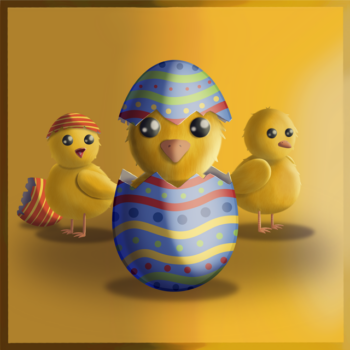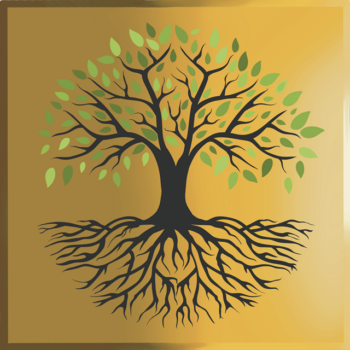Definition:
“The Circle of Life” is a fictional concept that refers to the cycle of birth, growth, reproduction, death, and renewal that is observed in all living organisms. This concept emphasizes the interconnectedness of all life forms and the continuous cycle of life and death that sustains ecosystems and the planet as a whole.
Etymology:
The term “Circle of Life” is a metaphorical expression that describes the cyclical nature of life processes. “Circle” denotes a continuous loop without a beginning or end, symbolizing the perpetual nature of life.
Description:
The Circle of Life encompasses several key stages:
- Birth: The beginning of life, where an organism is brought into existence.
- Growth: The development and maturation of an organism as it moves towards adulthood.
- Reproduction: The process by which organisms produce offspring, ensuring the continuation of the species.
- Death: The end of an organism’s life, which leads to decomposition and the recycling of nutrients.
- Renewal: The process by which new life arises from the old, continuing the cycle.
The circle of life represents the idea that everything in life is part of an infinite circle.
The symbolism of the circle of life has been present in many cultures and traditions around the world, and it is linked to cycles of life, but also to natural cycles where consciousness does not occur, such as the cosmos, the sun and moon, and the seasons.
The fundamental idea behind the circle of life is that life goes through a series of stages, including birth, growth, maturity, reproduction, aging, death, and ultimately renewal, where the body becomes compost for nature and results in new life, such as flowers, to thrive.
The circle of life is also a symbol of interconnectedness and mutual dependence in nature, where all living beings and elements in the vast infinite picture influence each other. Theists believe this means that everything is part of an infinite consciousness called God, but this has of course not been proven.
It is important to understand that everything in life is temporary. Even though it seems like everything repeats itself (in a circle), this is only an illusion. Change is the only constant. Everything that happens will always be new. It is only the brain that detects patterns, which often creates an illusion that two events are exactly the same.
Articles:
Herd Mentality:
“A4 life” is an expression used to describe a standardized or average lifestyle, often characterized by routine jobs, daily chores, and a general lack of unusual experiences. The term refers to the A4 paper format, which is the standard for documents and papers in many countries. An A4 life also symbolizes the circle of life and includes concepts that nearly everyone is expected to conform to throughout their lives. These are norms and traditions society expects you to participate in, and if you don’t, you may be labeled as strange or crazy.
Articles:
Children’s Initiation Ritual
Definition: Children’s initiation rituals refer to ceremonies or rituals performed to mark the birth of children and/or their initiation into the community or religious fellowship. These ceremonies are about labeling…
Coming-of-Age Ceremony
Definition: A “coming-of-age ceremony” is a ritual or event that marks the transition from childhood to adulthood. Etymology: The term “coming-of-age” is derived from the notion of reaching an age…
Commemorative Day
Definition: A “commemorative day” is a designated day set aside to remember, honor, or celebrate a specific event, person, or cause. It often involves activities and ceremonies that reflect the…
Funeral
Definition: A “funeral” is a ceremony held to honor and remember a person who has died. It is a ritual that provides an opportunity for the deceased’s family and friends…
Holiday
Definition: A “holiday” is a designated day of celebration or observance, often marked by time off from work or school, special activities, and cultural or religious rituals. Holidays can be…
Marriage
Definition: “Marriage” is a fictional concept; it is a legally and socially recognized union, typically between two individuals, and typically involving mutual obligations and rights. Etymology: The word “marriage” comes…
Midlife Crisis
Definition: A “midlife crisis” is a belief that a period of emotional turmoil and self-reflection occurs in middle adulthood, often between the ages of 40 and 60. During this time,…
Military
Definition: The “military” refers to the armed forces of a country, responsible for defending the nation against external threats, maintaining internal order, and supporting national interests. Etymology: The word “military”…
Reproduction
Definition: “Reproduction” is the biological process by which new individual organisms are produced. It is a fundamental feature of all known life and ensures the continuation of species. Reproduction can…
Retirement
Definition: “Retirement” is the period in life when an individual stops working full-time or withdraws from their professional career, usually upon reaching a certain age or after achieving financial stability….
School Education
Definition: “School education” refers to the formal instruction provided to students in an institutional setting, typically from early childhood through adolescence. It encompasses a wide range of subjects and skills,…
Work
Definition: “Work” refers to activities involving mental or physical effort done in order to achieve a purpose or result. Typically, it is performed to earn a livelihood, fulfill duties, or…
Symbolism:
Articles:
Caduceus
Definition: The “caduceus” is a symbol traditionally associated with Hermes (Mercury in Roman mythology), the Greek god of messengers, commerce, and trade. It features a short staff entwined by two…
Easter Chicken
Definition: The “Easter Chicken,” often referred to as the “Easter Chick,” is a symbol associated with the Easter holiday. Etymology: The term “Easter Chicken” or “Easter Chick” combines “Easter,” the…
Flower Crown
Definition: A “flower crown” is a circular arrangement of flowers, leaves, and sometimes other decorative elements worn on the head. Etymology: The term “flower crown” combines “flower,” from the Old…
Mistletoe
Definition: “Mistletoe” is a parasitic plant that grows on the branches or trunks of trees. It is known for its small, white berries and green, leathery leaves. Etymology: The word…
Seal of Solomon
Definition: The “Seal of Solomon,” also known as the “Ring of Solomon,” is a symbolic emblem attributed to King Solomon, a wise and powerful monarch in Jewish, Christian, and Islamic…
Star of David
Definition: The “Star of David,” also known as the Magen David (Shield of David), is a hexagram or six-pointed star formed by two interlocking triangles. It is a prominent symbol…
The Tree of Life
Definition: The Tree of Life is a fictional concept and typically refers to a symbolic tree in various religions. Etymology: The term “Tree of Life” comes from the concept of…
The Tree of the Knowledge of Good and Evil
Peter Paul Rubens – The Fall of Man (1628-1629). Charles Joseph Natoire – The Rebuke of Adam and Eve (1740). Definition: “The Tree of the Knowledge of Good and Evil,”…
The World Tree
Oluf Olufsen Bagge – Yggdrasil, The Mundane Tree (1847). The World Tree is illustrated as a massive tree holding up the world with its three branches. The world is inside…
Religion:
The Circle of Life concept is reflected in various religious and spiritual teachings:
- In the Bible, in Ecclesiastes, chapter 3, verses 1-2 (NIV), it says: “There is a time for everything, and a season for every activity under the heavens: a time to be born and a time to die, a time to plant and a time to uproot.”
- In the Bible, in Genesis, chapter 3, verse 19 (NIV), it says: “By the sweat of your brow you will eat your food until you return to the ground, since from it you were taken; for dust you are and to dust you will return.”
- In the Quran, in Surah Al-Baqarah 2:28 (Sahih International), it says: “How can you disbelieve in Allah when you were lifeless and He brought you to life; then He will cause you to die, then He will bring you [back] to life, and then to Him you will be returned.”
- In the Bhagavad Gita, in chapter 2, verse 27, it says: “For one who has taken birth, death is certain; and for one who is dead, birth is certain. Therefore, in the unavoidable discharge of your duty, you should not lament.”




